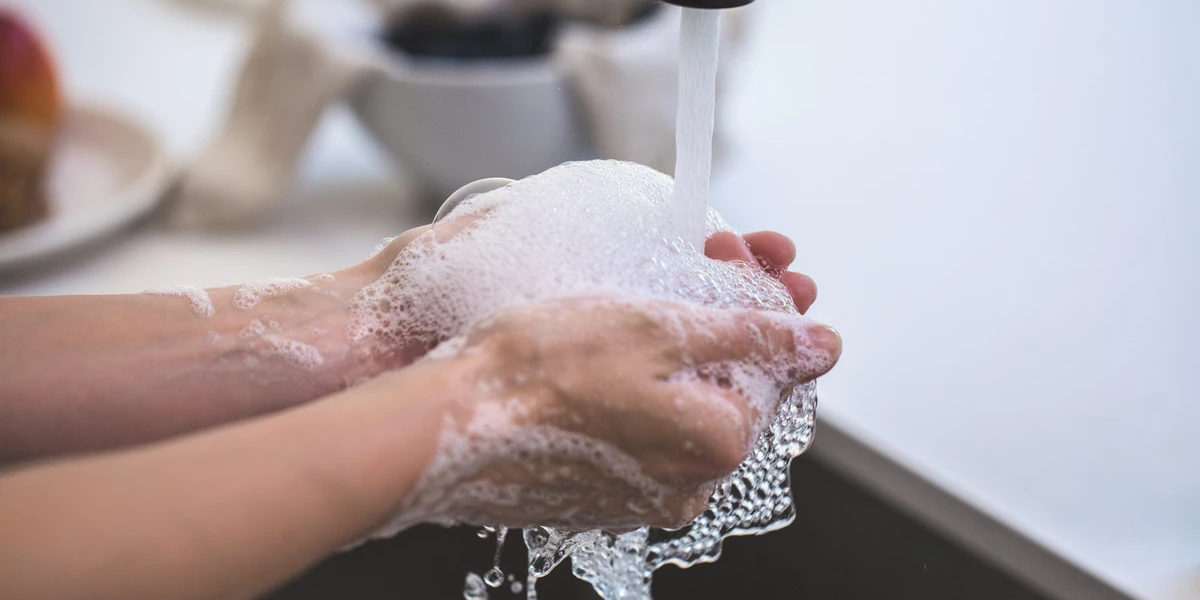One of the most important factors in maintaining CPAP compliance is taking proper care of your CPAP equipment. To be successful in CPAP therapy, you must be willing to make your treatment a priority in your life, and that includes regular cleaning, maintenance, and replacement of your CPAP equipment. Cleaning is important to ensure bacteria does not build up in the device. Changing supplies on the recommended basis is important to ensure equipment remains sanitary and effective. Nightly use causes wear and tear and breaks down the materials that the equipment is made with. This could cause a poor seal and lead to ineffective therapy.
Cleaning your CPAP equipment is not burdensome or time consuming. It is quite simple to clean. All you need is some dish soap and water. Establishing a daily routine is suggested so that both the device and accessories can operate at maximum efficiency while working to provide you with a good night’s sleep. Most CPAP users prefer to clean their equipment in the morning to allow for ample time to dry during the day. It is also important to note that distilled water should be used in the water chamber to prevent any buildup in the tank. However, normal tap water can be used for cleaning purposes. Try to avoid soaps that contain ammonia when cleaning the equipment, because it could cause breakdown of some of the materials.
Remember, you’re breathing in the air that is circulated through your machine, the tubing, and into the mask. The air is filtered and humidified, but you still need to keep your mask clean to avoid potential issues such as smell, mold, bacteria exposure, premature equipment breakdown, etc. It will be important to review your manufacturer’s instructions about how your supplies should be maintained but a basic recommended supply schedule is as follows:
Recommended supply replacement schedule:
- CPAP Mask – replace every 3 months
- CPAP mask cushions – replace 1-2x a month
- CPAP mask headgear and chinstraps – replace every 6 months
- CPAP tubing – replace every 3 months
- CPAP humidifier / water chamber – replace every 6 months
- CPAP filters – replace at least once a month or every 2 weeks if your prone to allergies, if you are in a particularly dusty area, or if you have animals.
How to Clean Your CPAP Equipment: A Step-By-Step Guide:Cleaning your CPAP equipment should be done on a weekly basis.
- Unplug your CPAP machine from its power source to avoid any dangers of electrical shock. Disassemble the parts of the CPAP machine. Detach the tubing from the machine and the mask from the tubing. If your mask has a headgear, remove that as well. Remove the humidifier. The humidifier may have a couple attachments so you will want to disassemble that also.
- The CPAP machine just needs to be wiped down with a soft cloth and warm water to remove any dust particles. The cloth should be damp, not dripping wet.
- Fill up your sink/basin/tub with warm water and a little dish soap. You will want to submerge all supplies (mask, headgear, tubing) and let soak for around 30mins. You will want to run some soapy water thru your tubing and swish it around, so it cleans thoroughly inside. Once this is complete, remove items, rinse off well with clean water and allow to air dry. You can hang your tubing over your shower bar if you have one for optimal drying.
- Every humidifier is different, but most come with instructions on how to break it down from the manufacturer. Once you disassemble the humidifier use hot soapy water to disinfect, soak and then air dry. *Using distilled water is your best option to keep your machine running at optimum performance. It will also help to ensure you’re receiving the correct amount of pressure and prevent bacteria from making its way into your airway.
- Most CPAP machines have filters, they vary, some are disposable and others non-disposable. While some can be rinsed off others need to be replaced. The frequency of replacement all depends on the environment in which you live. You will want to review your manufactures instructions about how your specific filter should be maintained.
- Once everything has air-dried you are ready to reassemble. It is important that equipment is completely dried, as residual moisture can make a good home for bacteria. Attach the mask to the headgear, then the mask to the tubing and the tubing to the CPAP machine and prepare for a good night’s sleep.
An additional cleaning step that some individuals choose to take is to sanitize their equipment with a vinegar and water solution on a monthly basis. This can be done by making a solution of 1-part vinegar to 3-parts water. Soak the equipment in this solution for approximately 30 minutes and then rinse well. Please note that vinegar can leave an odor behind that some may not like.
Many people also choose to use a sanitizing device in addition to their regular cleaning and maintenance. Some of these devices work by using ozone or UV rays to sanitize the equipment.
There are also wipes and various other supplies available for purchase to be used for cleaning the device and equipment. Do a little searching and cleaning to figure out what works best for you!
– Laura Pratt and Page Maryyanek
*This content is not intended to be a substitute for professional medical advice, diagnosis, or treatment. Always seek the advice of your physician or other qualified health provider with any questions you may have regarding a medical condition.

